Map of Northern Luzon Philippines
*Image credited to PhilNews.Ph
I am from Northern Luzon, I am an Ilocano.
Who are the Ilocanos?
Ilocanos are the known to be the third largest ethnolinguistic group that usually reside in the Ilocos Region. The word Ilocano came from the "Iloko"(Yloco), a conjugation of "I"--meaning "of" and "look"--meaning "bay".
Ilocanos are know to be frugal but I must say that we just know how to manage our money, spending it well with what should be our top priority.
Our frugality can not just be mirrored with our lifestyle but also with our food, and this is what I will writing about, our frugality that reflects in our cuisine.
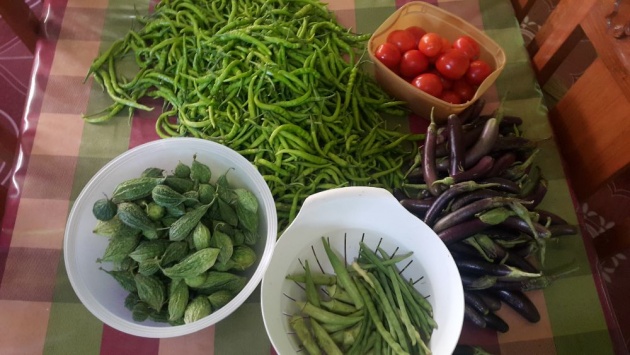
Our well loved vegetables, ampalaya, green chilis, eggplants, tomatoes, okra and string beans(sitaw)
*Image is mine*
Ilocano Cuisine
Ilocano cusine can only have the least ingredients, the most common condiments in every household like salt, our famous bagoong and that well fermented sukang Iloco(sugarcane vinegar).
With the dishes that we are known for, you can say that the ingredients are common sight, meaning they can be found in the yard or a neigbor gave it for free, which is a common here in our community.
Yes, Ilocanos love our vegetables, but it doesn't mean we don't eat meat. We can have goat meat, pork, beef(cow and carabao), and also we have fish.
What are the famous Ilocano Dishes?
Since we are frugal, almost everything are eaten, nothing is being put to waste.
1. Dinengdeng. This is a vegetable dish that almost every common vegetable can be make into this dish (well except those you use for pansit or noodles). Malunggay(moringga), kamote tops, ampalaya leaves, and saluyot leaves are just few of those that can be cooked as dinengdeng. Cooked in boiling water with bagoong, fried/grilled fish is optional to be added in and we call it "sagpaw".
*Trivia: Dinengdeng/diningding means "sinasala", the bagoong is being strained and added to the boiling water.

Saluyot plants growing and almost ready for dinengdeng.
*Image is mine.
2. Pinakbet/pakbet. The term "pinakbet" is from "pinakebbet" that means "make it shrink". This is another vegetable dish that has eggplant(that really shrink after it rendered it water content), okra, amplaya, with tomatoes and onions, with bagoong from a fermented fish(not shrimp) and these are just the "basic" ingredients. More vegetables are being added on it like, squash, string beans. And it has gone more further with some either changed the bagoong from a fermented fish to fermented shrimp, and the way they cook it is saute and not the usual Ilocano way of just putting everything into the pot and had the water content of the vegetables be out and it will cook the dish. An addition of the dish is fish(fried/grilled), the old fashion way and the new way now is, we put pork that has been sauteed or the famous "bagnet"(deep fried pork belly).
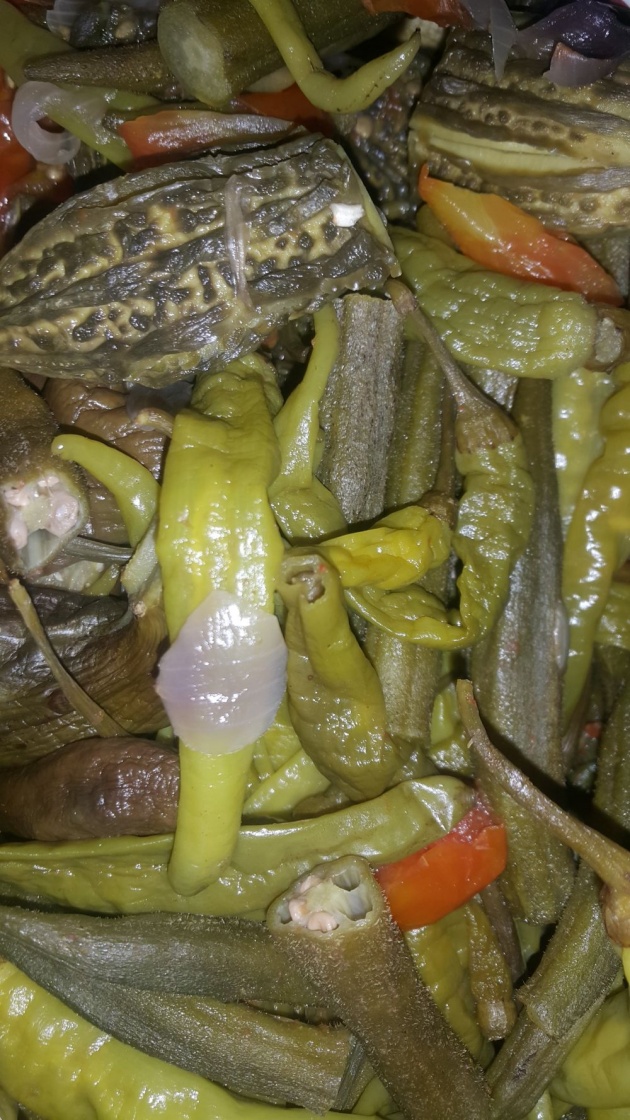
Ilocanos famous pinakbet.
*Image is mine.
3. Dinuydoy/dinoydoy. Another vegetable dish that consist of just sauteed pork with squash that has been softened almost mash with either ampalaya leaves or fruits.
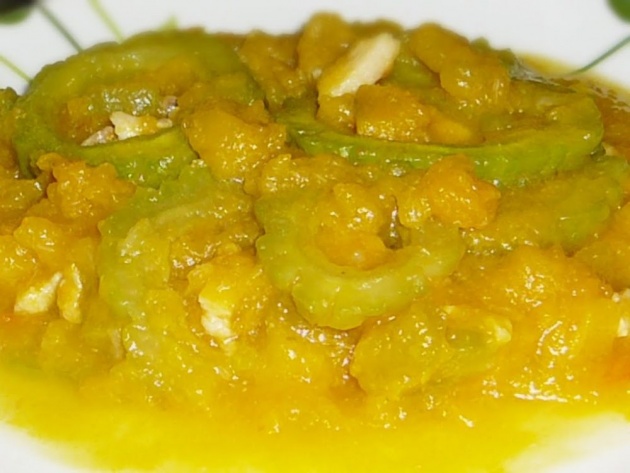
Dinoydoy
*Image is credited to OverseasPinoycooking
4. Burudibud. This can be like a sister of "Dinengdeng", the only difference is that the soup is thick, thickened by rootcrops like camote, or gabi, basically those that has rich in starch (but not potatoes). Malunggay fruit is the most popular, and few more vegetables are added like "katuray" flower, and eggplant. Fish that has been either frid or grilled is added into it, or beef(cow or carabao) that has been grounded or manually minced and we call it "tinegteg". And as usual, bagoong is another ingredient too.

Burudibud
*Image is credited to Kriska Marie
5. Igado. This is meat dish. If other province has "bopis", we have our igado. This dish is made up of pork loin and mostly pork's internal organs like liver, heart, lungs, kidney. It is being sauteed in garlic with annatto(seed is soaked then the water is strained) to add color. The dish is sometimes being called as "dinaldalem/daldalem" which is ilocano for liver since it has a lot of it. Green peas, and bell pepper are added into it for color.

Igado.
*Image is mine
6. Dinakdakan. Another meat dish. This is ilocanos version of "sisig". Pork face is boiled then girlled then chopped into small portions, but we put sukang iloco(Ilocano's vinegar) and pig's brain or mayonnaise.
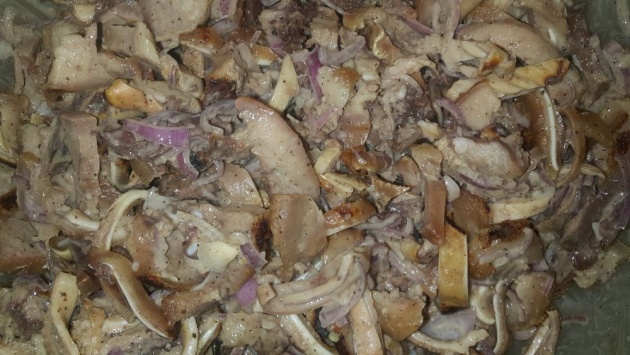
Dinakdakan, our version of sisig.
*Image is mine
7.Singkutsar/papaitan. This is a dish that not all can eat since internal organs or either beef or goat is there. The dish's name can be confusing to some, which is which, is it singkutsar or papaitan? Both can have the same ingredients, tha latter has just have that more bitter taste from the "papait" or the "thing" that can be found on the intestine of the animal(carabao, cow or goat). Kamias is added into the dish that gives that bite of sourness.

This is sinkutyar/papaitan made out of carabeef(carabao beef).
*Image is mine.
8. Sinanglaw. A "sister" of singkutsar. What makes it different is the cute of the internal organs, it is bigger and there is no hint of sourness.
9. Poqui-poqui. This is a vegetable dish that can be close to "tortang talong" or eggplant omelet, but the difference is made out of sauteed grilled eggplants, that is mashed with onions, garlic and tomato.
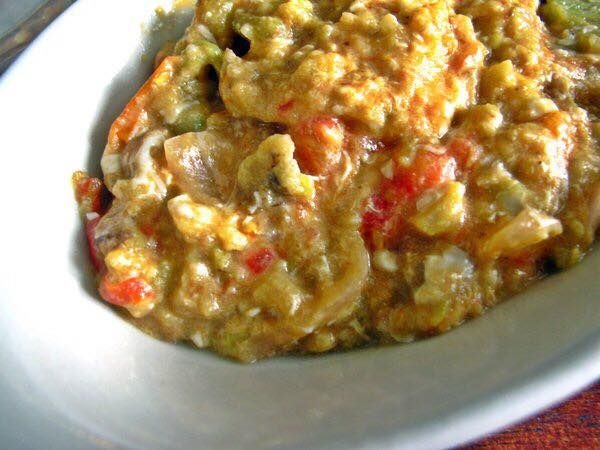
This is Poqui poqui.
*Image is credited to Ilocano.org.
Isn't it nice to know that we, Ilocanos are not just known for frugality but also how great our food can be?
Until next time, Ilocandia's street food is next.
God blesses us all! :D
*Video is credited to youtube




